After over a decade of trading cryptocurrencies, spending three years, a thousand days and nights, and tens of thousands of trades, this method has a success rate of up to 90%.
This is based on my personal testing: starting with 80,000, I managed to grow it into over 10 million using this trading method!
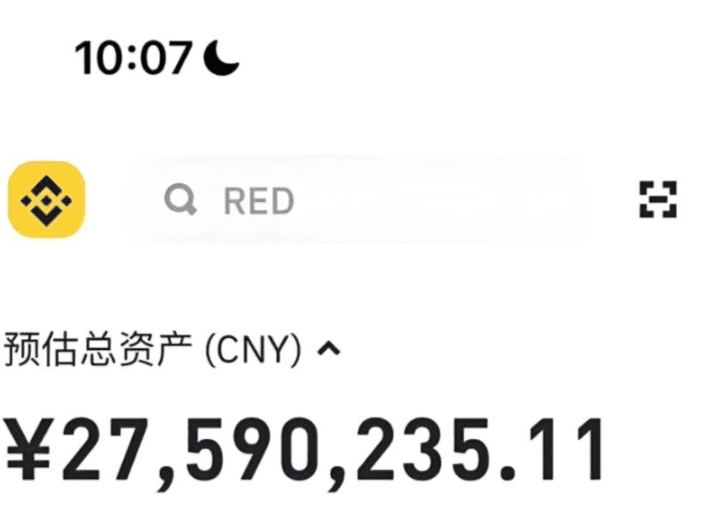
Currently sharing with everyone, if you carefully read this article, you will benefit for a lifetime! Remember to bookmark, repeatedly study and practice, summarize, and review to develop your own trading system.
Table of Contents:
One: Basic concepts of market making in the crypto space.
Two: The basic logic of market making in the crypto space.
Three: The basics of market making in the crypto space.
Four: The curse of retail investors in the crypto space.
Five: Choosing coins and bottom fishing in the crypto market.
Six: Riding the coattails of market makers in the crypto space.
Seven: Strategic trading methods for market making in the crypto market.
Eight: Basic indicators for market making in the crypto space.
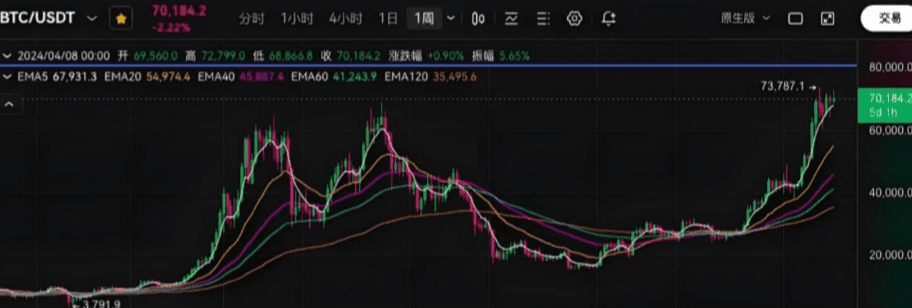
Two: The basic logic of market making in the crypto space.
How can one make money in the stock market or crypto space?
Clarifying two concepts: market makers and retail investors.
In essence, stocks or virtual currencies are merely a game where market makers manipulate retail investors through price fluctuations.
Some say I know the market maker; so what? The market maker says I'm right here; what's your move? Do you have a big team like the market maker? Do you have more capital? Do you have broad information? You have nothing, so what does it matter that you know about the market maker?
What you really need to understand is not concepts or news. The daily barrage of fake and exaggerated news pulls you in one direction, making you unaware of the other.
What you truly need to know is the data, specifically the market maker's data.
How to view the market maker's data? Regardless of stocks, forex, or cryptocurrencies, the most reliable indicator is volume.
Volume ✖ Price = Money = The money invested by the market maker!
If you know how much money a market maker has invested in a cryptocurrency pair and at what cost, and how much they intend to profit, you can relax and enjoy the benefits.
It sounds easy to say, but it’s difficult to do.
The difficulty lies in being manipulated by the candlestick in front of you, running when you should be holding, and entering when you should be running. Often, you will regret it later: if only I hadn't sold at that time, or if only I hadn't acted impulsively and gotten trapped. I said this would rise; see how it rose? I said this would fall; see how steeply it fell? But if given another chance, you would still choose to act impulsively and would still regret it. Hence, hindsight is of no significance! It only adds to your emotional exhaustion.
The root reason is your uncertainty. Why are you uncertain? Because you haven't grasped the most basic logic.
What is the logic? For example, what is a complete life logic? Birth, childhood, youth, adulthood, old age. This is a complete life logic.
What is the logic of a cryptocurrency? Rise and fall. When you see this, you might say, that's obvious; I know about rising and falling. The key here is the nodes: a child should enter kindergarten at 3, get married at 20, and retire at 60. These are the nodes. If a child is three, you know: oh, this child is about to go to kindergarten. Similarly, if you find that the candlestick has reached a rising node, you will know it is time to buy without hesitation.
Rises and falls can be subdivided into many nodes, which are accumulation, washout, pump, and distribution—four stages. If you can understand the accumulation stage, you've already succeeded halfway. This will at least ensure you won’t incur losses.
Three: The basics of market making in the crypto space.
Next, let's discuss the actions of market makers separately. To have a correct understanding, one needs a solid foundation. A tall building must start from the ground. Without a foundation, your logic has no support. What are candlesticks? Candlesticks record prices over a certain period. For example, daily, weekly, monthly candlesticks, and shorter periods like hourly and minute candlesticks. Candlesticks mainly consist of four elements: highest price, lowest price, opening price, and closing price.
B circle introduction | Making it easy for beginners to understand candlesticks
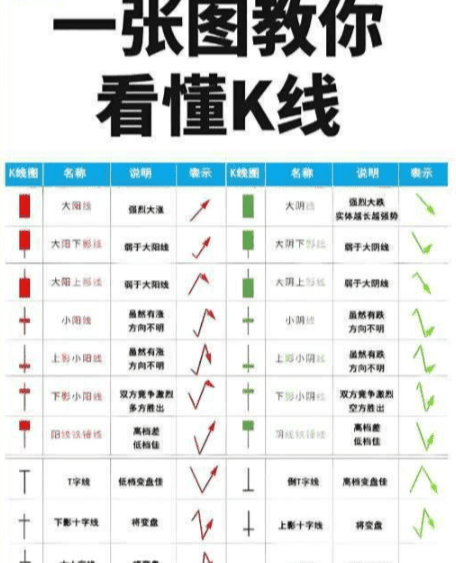
[Star R] Basic composition of candlesticks.
Opening price: the initial transaction price of the trading day.
Closing price: the final transaction price of the trading day.
Highest price: the highest transaction price within the trading day.
Lowest price: the lowest transaction price within the trading day.
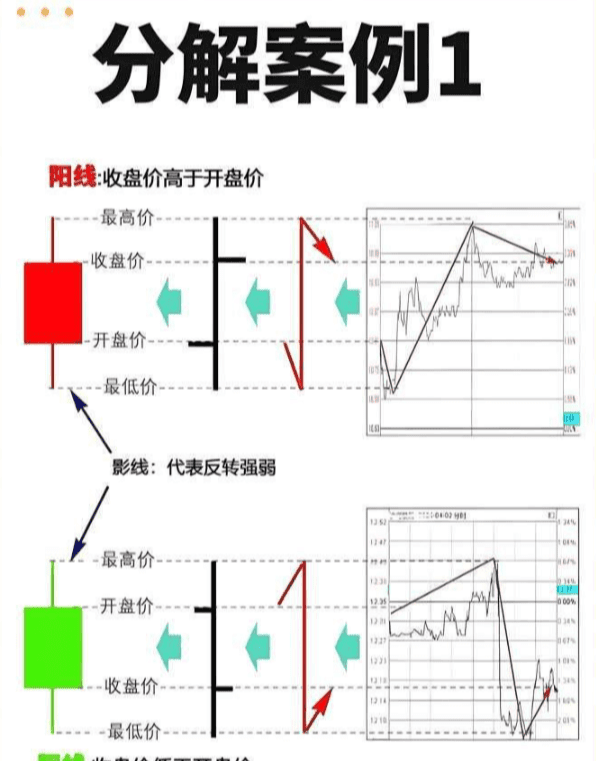
Candlesticks typically consist of three parts:
Upper shadow: located above the candlestick, indicating the price range between the highest price and the closing price (or opening price, depending on the candlestick's color).
Body: indicates the price range between the opening and closing prices. A bullish candlestick (red or white) indicates the closing price is higher than the opening price, and a bearish candlestick (green or black) indicates the closing price is lower than the opening price.
Lower shadow: located below the candlestick, indicating the price range between the lowest price and the opening price (or closing price, depending on the candlestick's color).
[Star R] Methods for interpreting candlesticks.
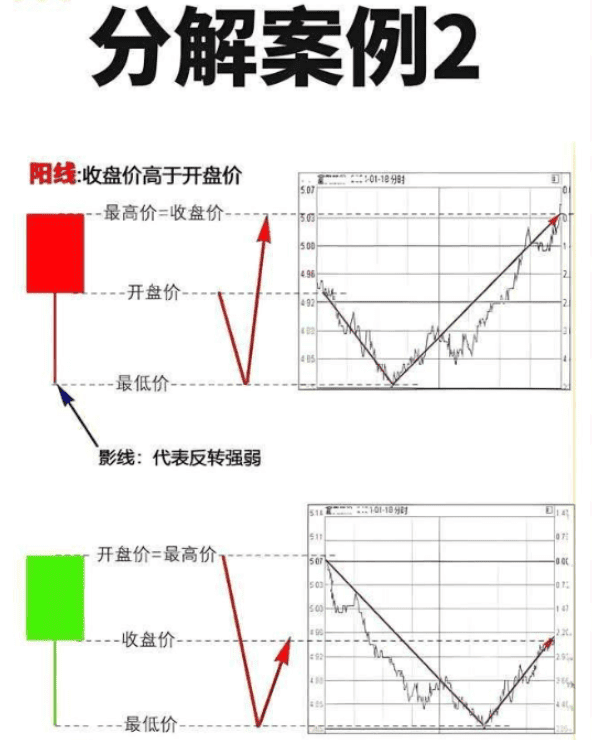
Interpretation of a single candlestick.
Bullish and bearish candlesticks: a bullish candlestick indicates the market rose during that period, while a bearish candlestick indicates it fell.
Body size: The longer the body, the stronger the market's attack force. The longer the body of a bullish candlestick, the more robust the upward momentum; the longer the body of a bearish candlestick, the greater the downward force.
Shadow length: The longer the shadow, the stronger the resistance or support in that direction. The longer the upper shadow, the greater the resistance to rising; the longer the lower shadow, the stronger the support.
Interpretation of candlestick combinations.
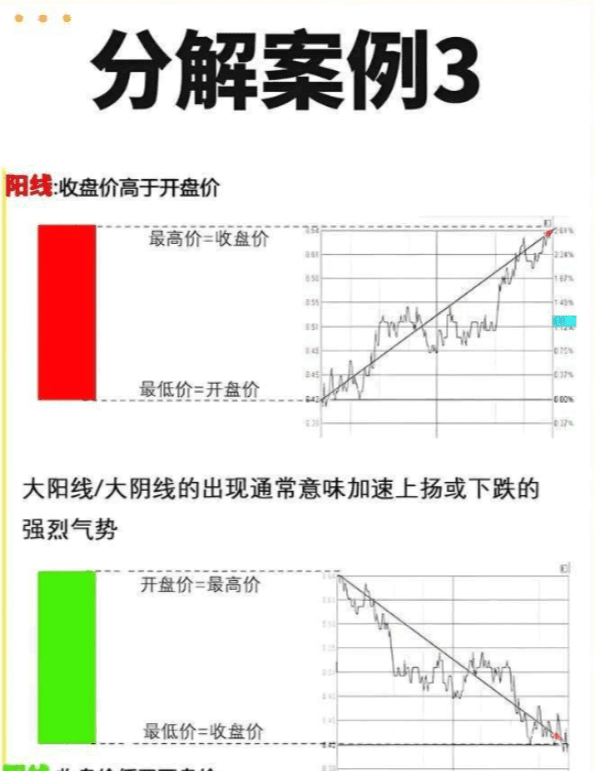
Four: The curse of retail investors in the crypto space.
Regarding the curse of buying leading to drops and selling leading to rises.
If you think about this problem from a different perspective, it becomes clear. It's a simple principle: if I were the market maker and have built such a large team and invested so much money, my goal is to make money off you, not to help you make money. This is the main point. All actions revolve around this point. I spend months or even a year secretly accumulating bottom chips; why would I help you profit? Therefore, before the price rises, I must drive you off the bus. How do I do that? By washing the plate!
After lying low for a while, I have obtained enough chips, enough to control the market. Next, the entire fate of the candlestick is entirely in my hands. Controlling the candlestick is equivalent to holding the retail investors' hearts. The candlestick is the rope, and retail investors are a flock of sheep. Wherever I lead, they will follow, allowing me to manipulate them as I wish. You think you won’t be easily swayed? You overestimate yourself; as long as you still have humanity and desires, you cannot achieve a peaceful mind. Emotional fluctuations only require a moment; buying and selling actions only take a second. You won’t even have time to realize your emotions are being controlled. When you realize all this, you have already completed the buying and selling actions, and that’s exactly what I want you to do.
When you think this coin will rise, others will think so too. Most people think the same, so it’s not just you buying; others are buying too. If all of you come in, how can I continue to rise? If I start rising and you all make money and run, who will take your place? So, once you're all in, I’ll wash you out until no shaky hands are left. Unless you uninstall the platform after buying, then I truly can’t do anything, but how many can achieve that?
Conversely, when no one thinks the coin will rise, when there are no retail investors rushing in and the previous retail investors have mostly exited, then it’s time for me to start the rise. I’ll pull it up with a big bullish candlestick. Whether you chase or not, if too many chase, I’ll repeat the washout action. If you don’t chase, why shouldn’t I continue to rise? You’ll miss out successfully.
So, buying leads to drops, and selling leads to rises is a result of the actions of the vast majority of retail investors; this is a dynamic tendency.
As long as it’s ‘most people,’ you will fall into this curse. How to be among the minority? Market makers hunt retail investors, we hunt market makers. There are many experts in the crypto space. When market makers hunt retail investors, they watch, and when market makers raise prices, they follow. When market makers distribute chips, they run away.
Their common characteristic is patience. Like a wolf, watching its prey, motionless.
Know yourself and your opponent in order to win every battle. Understanding the enemy's movements allows for targeted actions.
I'm sure the old hands have seen this picture below, even to the point of being very familiar with it.
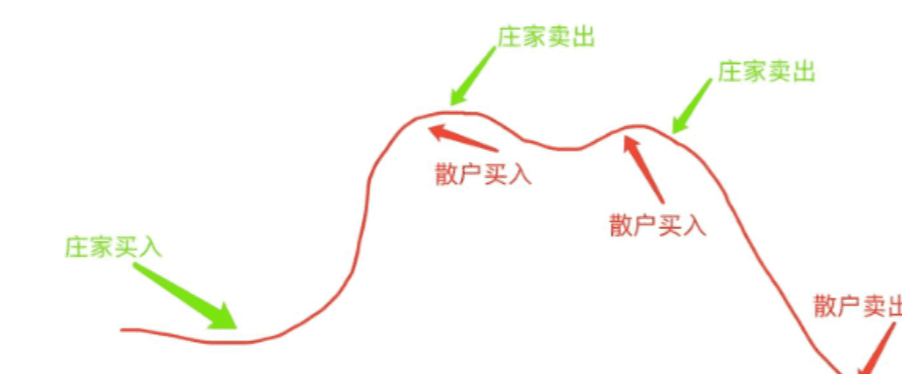
After seeing this image, you might think, how could I be so foolish? You don't believe it, right? Just look at your trading records. Why is it so hard to act on such simple truths? It's just human nature; trading is all about human nature.
Five: Choosing coins and bottom fishing in the crypto market.
To compete with the market makers, you need to have a comprehensive understanding of them. Each market maker has their unique trading style; some are aggressive, some are cautious, some are bloody and violent, while others are gentle and refined. Based on their attitude towards retail investors, they can be divided into two types: benevolent market makers and malevolent market makers. Let's look at two comparison charts:

Weekly chart trend, from around 1 in May 2022 to a peak price of 12 in April 2024, yielding nearly 11 times returns in two years. Starting from the bottom, it slowly climbs. As long as you're on board, it won't take long for you to see profits. There are no significant fluctuations that would scare you; I make money, and I help you make money too, giving you a big brother feeling. This type of market maker is rare! Most of the time, it's more like this:
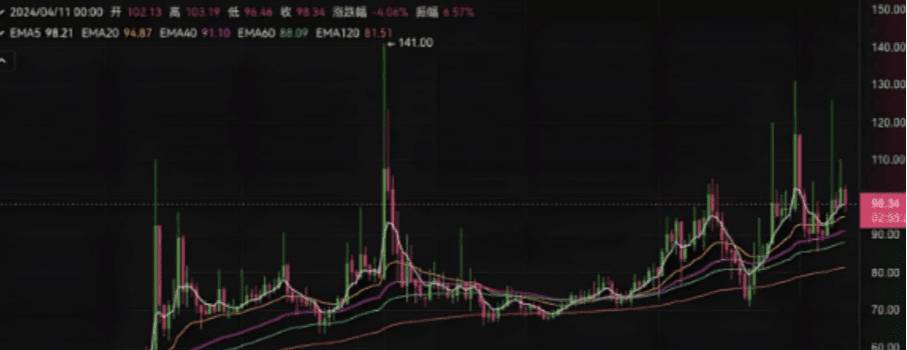
A large bullish candlestick entices retail investors, then a large bearish candlestick cuts off their heads. Many small retail investors are left hanging on the high needle tip, and the tactics are extremely brutal. With such a market maker, it’s difficult to make money; even if you’re lucky enough to earn a little, you will ultimately give it back, and not only will you fail to make money, but you will also suffer greatly.
In the crypto market, there is no shortage of such market makers, whose trading methods are ruthless.
In the stock market, there is a saying called the limit-up gene. This term also applies in the crypto space. If a market maker has used a particular method before, they are likely to use it again in the future. Each trader has their own personality, which reflects in their trading methods. It's hard to change one's nature unless the market maker changes.
Of course, there are also cases where the washouts and elevations proceed in an orderly manner, with both sideways movements and fluctuations, alongside main upward waves.
By observing the trading methods used by market makers, we can roughly judge what type of market maker they are, and you can gauge the difficulty of making money in that market. Naturally, choose the one with the least difficulty.
With this basic concept in mind, let's look at the market maker's entry point, commonly referred to as the bottom for bottom fishing.
'What is the bottom? Can it be fished out?'
First, let's discuss what forms the 'bottom.' When the price of a cryptocurrency pair drops to its market value, it indicates that the 'bottom' is about to appear. How to understand this?
We should all understand the 'garlic you can afford' situation. What is the normal value of a pound of garlic? When the price of garlic is driven up by some malicious capital, it has already deviated far from its market value. If a pound of garlic is 3 yuan and is driven up to 10 yuan, the additional 7 yuan is the bubble. Remember, bubbles are meant to burst! When this bubble bursts, garlic will fall from 10 yuan to 9 yuan, 8 yuan, 7 yuan... Eventually dropping to 3 yuan, where people will feel this is its normal price, thus increasing buying power. At this point, the price will gradually stabilize, and this price is the bottom price of garlic, which is also its market value.
Of course, this is conceptually speaking. But how do we judge from the candlestick patterns?
When the value of a commodity is recognized by the 'majority of capital,' its value will be relatively stable. This 'majority of capital' can be seen as the market maker, and the value recognized by the market maker essentially reaches its market value.
Next, let’s discuss its logic. When a commodity is suddenly frequently purchased, it cannot remain stable at its original price; scarcity increases value, causing the price to rise. Once the price rises, buying power will relatively decline. If garlic becomes expensive, I can always eat scallions instead! When buying power decreases, prices will seek to balance and decline again. The following statement is crucial:
If it drops to a new low again, it indicates that the previous low has not received the market maker's recognition, meaning the market maker has not genuinely acquired it.
When the price drops to a new low, significant buying pressure will appear again, and the price will rise once more, followed by a decrease in buying power and another drop. Note, if at this point the price does not return to the original lowest price, it indicates one thing: 'Capital is continuously acquiring.'
Sustained buying power is a strong support against setting new lows.
So how do we judge the bottom?

After a cryptocurrency pair has been declining for a while and reaches point 1, how do you determine whether point 1 is the bottom?
Wait for point 2 to appear; if point 2 sets a new low, it proves that point 1 is not the bottom. How do we determine whether point 2 is the bottom? Wait for point 3 to appear; if it does not set a new low, it indicates 'capital is continuously acquiring.' Point 2 can be preliminarily judged as the bottom. Why is it a preliminary judgment? When point 4 appears, the bottom can be basically confirmed.
So you might ask, why not buy directly when the price hits point 2? By the time it reaches point 4, the price has already risen somewhat; wouldn’t that be too late?
If you have this thought, you need to review the analysis above. Even if you buy in, you're not buying at 2, but rather at 1. Remember, 2 is not the bottom until 3 comes out!
Even if you entered at point 2, subsequent washing will also wash you out. You may not be able to capture the entire upward phase, so it’s not about being late; it’s about whether you can make a judgment. If you get it right eight out of ten times, you can make money.
If you want to rely on luck to buy at the very bottom, remember, beneath the bottom, there is still a bottom. Attempting to catch falling knives will only result in injury.

The red arrow in the image indicates the actual buying point. Open any candlestick chart to simulate it. In fact, think back, what must a complete drop and rise go through? It must go through a turn. Carefully consider what a turn is.
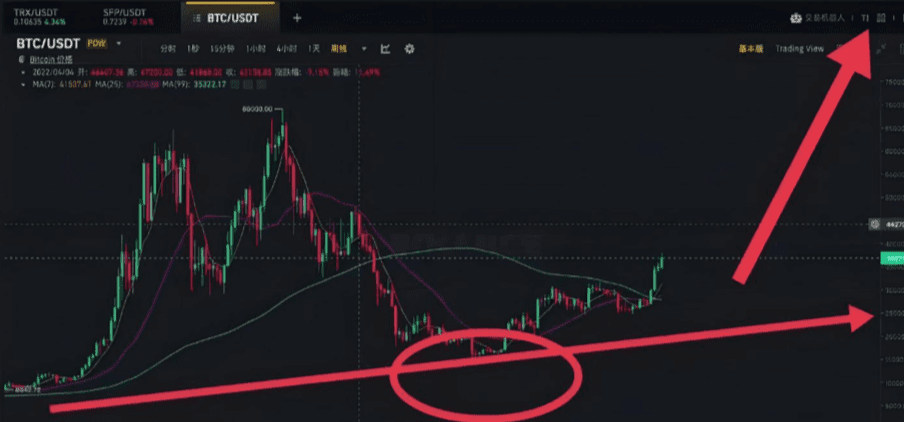
Six: Riding the coattails of market makers in the crypto space.
Let's first talk about a strategy: every drop during an uptrend is an opportunity to enter. Every rise during a downtrend is a signal to escape. Let's look at a few images to feel it intuitively:
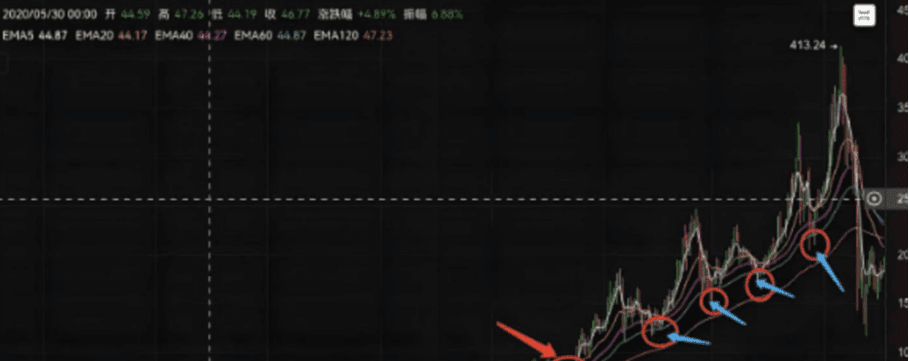
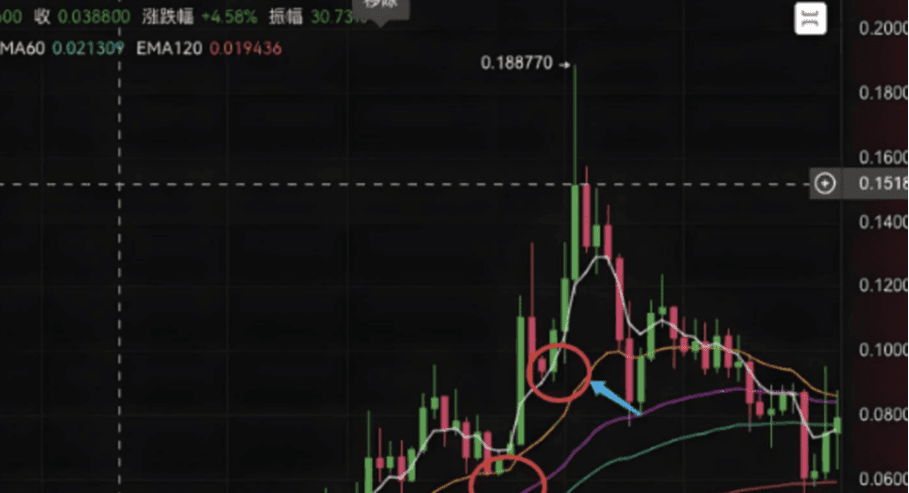
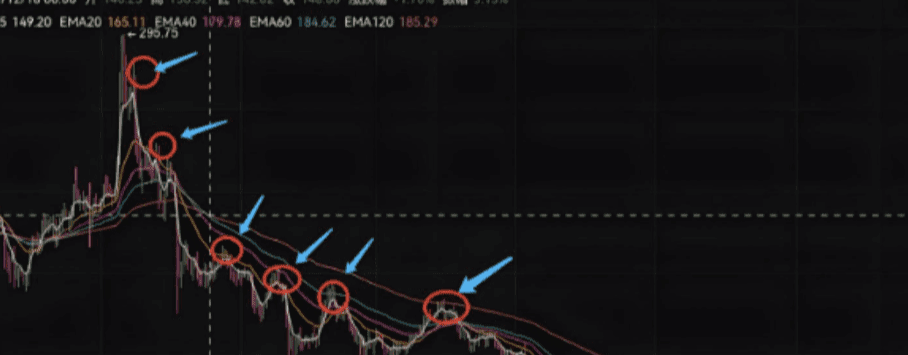
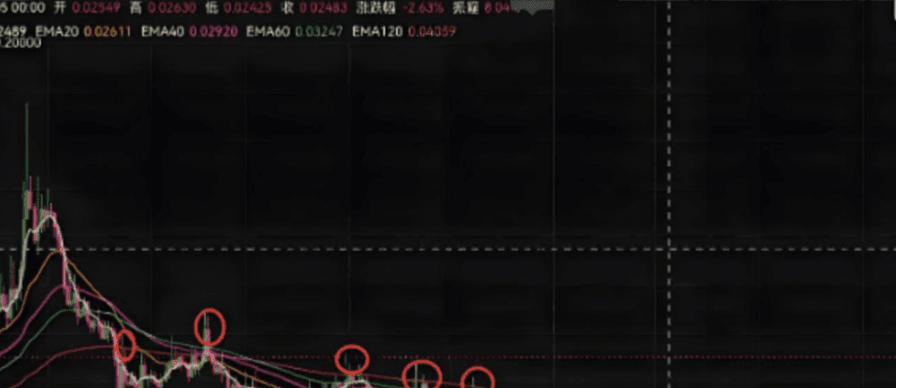
First, think about a question: does such a powerful market maker have weaknesses?
Yes, this weakness is the market maker's throat, and what we need to do is strike decisively.
When a market maker enters a cryptocurrency pair to start accumulating chips, that pair is unlikely to set new lows. You know: Oh, this market maker has started to infiltrate. Individual unexpected events can briefly set new lows, but when the leading chips are sufficiently collected, the main force must do one thing: start to push up. Even if many retail investors get on board at this point, the market maker has to push up because they have enough chips. At this time, what we need to do is catch this favorable wave and share the profits.
The bottom position mentioned in the previous article is precisely inserted at this location of the market maker: the throat.
Thus, when does a trend begin? When a cryptocurrency pair no longer sets new lows, it indicates that the market maker has entered, marking the beginning of an upward trend. This is the trend.
Remember, once a trend starts, every drop is an opportunity to enter; do not miss it.
During an uptrend, many retail investors follow along. The purpose of the drop is to wash out, but in reality, you often chase at a high point during a rise and panic sell at a low point during a washout, suffering losses. Take a look at your trading records; reflecting on this is utterly ridiculous.
Remember, in an uptrend, every drop is merely a washout; don’t think every drop means that cryptocurrency is failing, about to crash, or delisting. It’s just a washout, at most a false move; why fear a false move? Even if you don’t know where to buy or sell, as long as you have this concept in your mind, you’ve already surpassed 80% of retail investors. At the very least, the candlesticks have a large framework in your eyes, and as long as there is a large framework, you can feel secure. The rest is patience.
Some might say, this is because the candlestick chart has already formed; you can naturally draw it this way. But how do you know if it hasn't formed yet?
Do not be stubborn or get stuck in a corner; think, what is the logic of this process?
As the saying goes, the one who knows how to buy is a novice, while the one who knows how to sell is a master. Market makers often act very subtly to avoid revealing that they are fleeing, making it much harder to escape compared to bottom fishing. The reality is, if you happen to be at a high point as a retail investor, that's your luck. You can't eat the whole fish from head to tail; eating a segment is enough for you to digest. You can only secure your profits before the market maker flees.
As for how to determine whether it's the head, one aspect is to look at the volume, and the other is whether the coin price will set new highs again. This will be elaborated in a future article dedicated to how to determine the market maker's head.
The trading strategy mentioned at the beginning also includes an ultimate skill: the pin needle.
Among these washout methods, I particularly favor the pin needle, especially large pin needles. Upon seeing such a pin needle, I instinctively feel excited. Because I know very well what the main force intends to do at this time. I call this figure a slingshot: the tighter the slingshot is pulled back, the further it will shoot. For example:
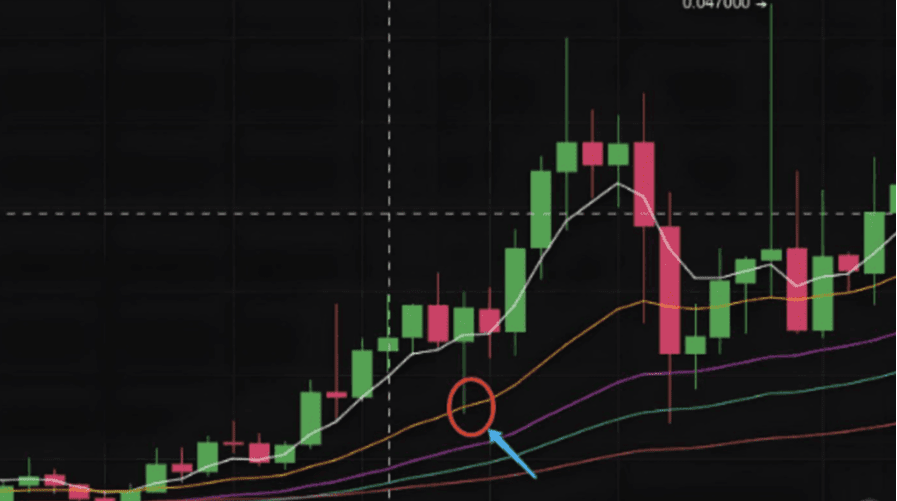
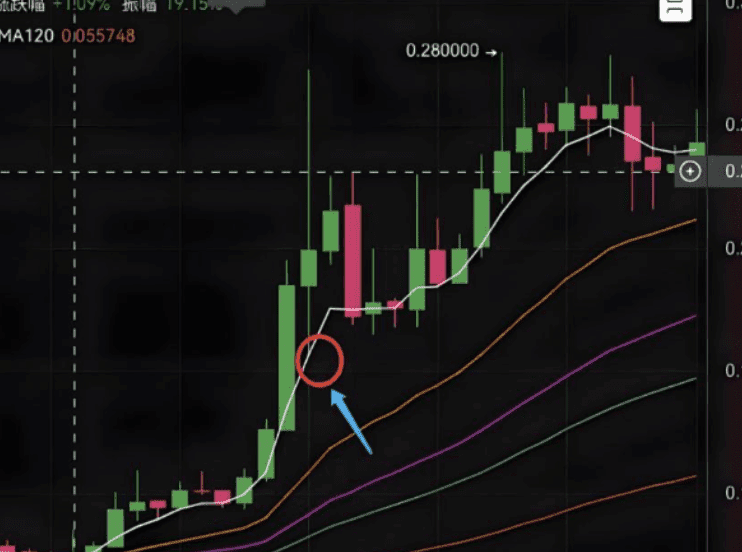
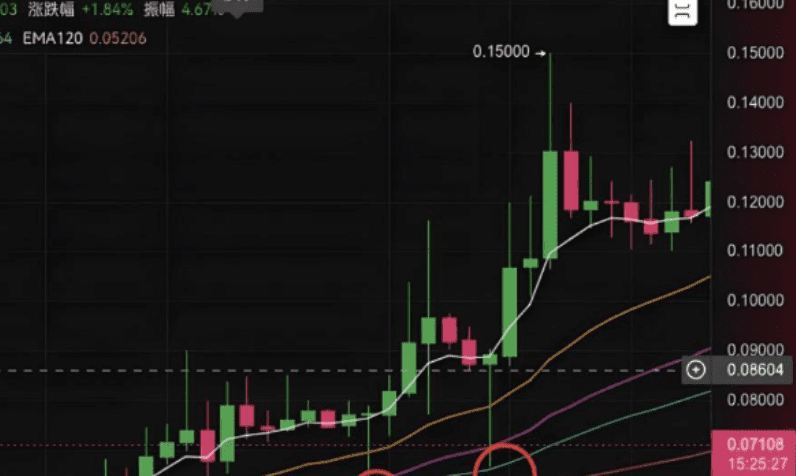
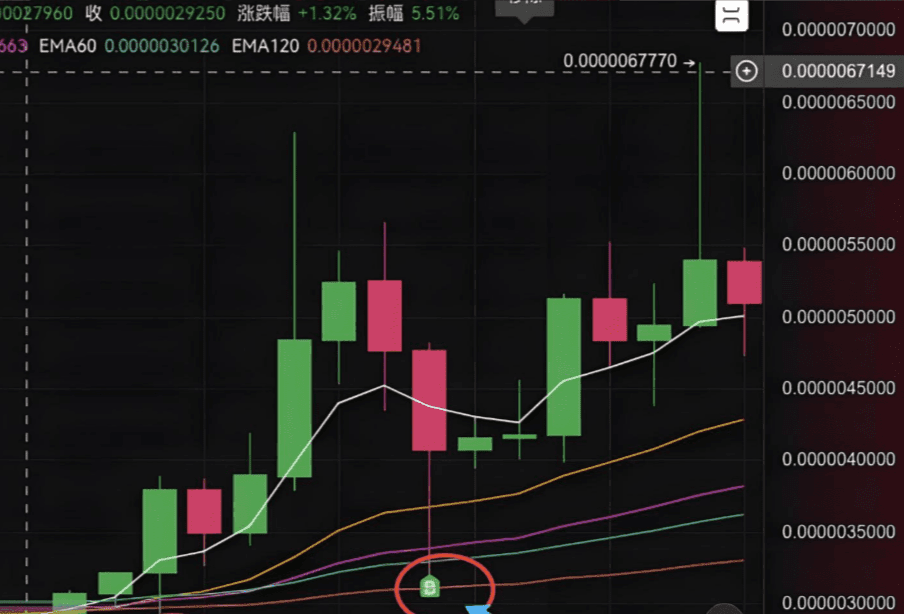
So, is the pin needle scary? Not at all; it’s even a bit adorable, but only in an uptrend. Conversely, when the coin price reaches two or even three times the profit, it can even reach ten or a hundred times profit in the crypto space. It’s no exaggeration to say that even if you can take 50% during this process, you’ve already positioned yourself at the top of the retail investor pyramid. Once: if the price no longer sets new highs, be careful. Remember these 12 words. Once an avalanche occurs, it will be disastrous. Every rise is an opportunity to escape; don’t hope for a bit more rise, don’t hesitate, otherwise, you’ll be stuck for ages. Among this, there’s an extremely dangerous operation: betting on rebounds. The returns are low, but the risks are extremely high; it’s like trying to catch fire with your hands, a losing game.
Seven: Strategic trading methods for market making. First, let’s see how pressure and support levels are formed.
It can be said that the resistance level is created by the collective power of retail investors, who are still quite united in this area. When a peak is filled with many retail investors' losses, these losses will become numb and indifferent.
An interesting phenomenon occurs: whether in the stock market or the crypto space, after many drops, it becomes inconsequential; a slight rise makes people eager to sell, fearing profit withdrawal. The actual approach should be to cut losses promptly and hold onto trends patiently for harvest. After years of hardship, taking just a few points is simply wasting time!
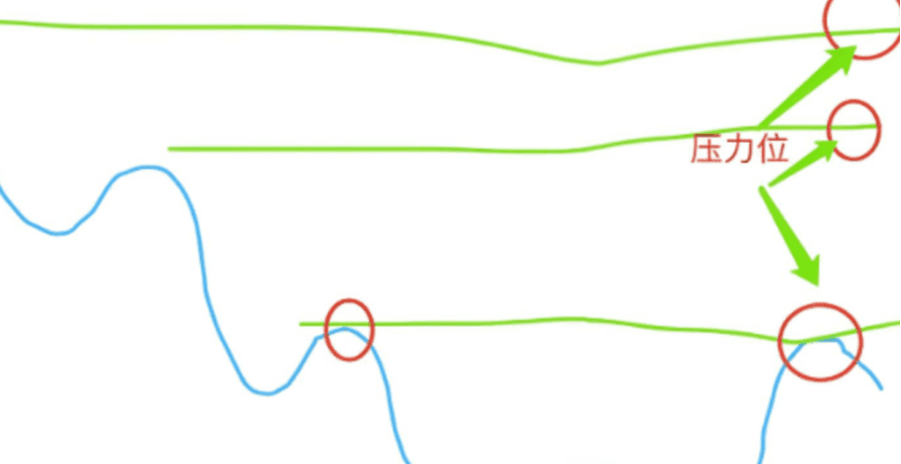
When the price returns to this level, everyone rushes to break even and exit. People truly learn to cherish what they have only after losing it. After waiting so long, that price point has finally returned; how can they not be excited? Due to the excessive selling pressure from breaking even, the resistance level is thus formed and exerts suppressive power.
How is the support level formed?
In the same way, support levels often provide support only in an ascending channel. When many retail investors chase after the last high point, when the coin price adjusts back to that level, due to the market sentiment leaning towards bullishness, selling volume is minimal, forming a de facto support, and prices often stop falling and bounce back at that point.
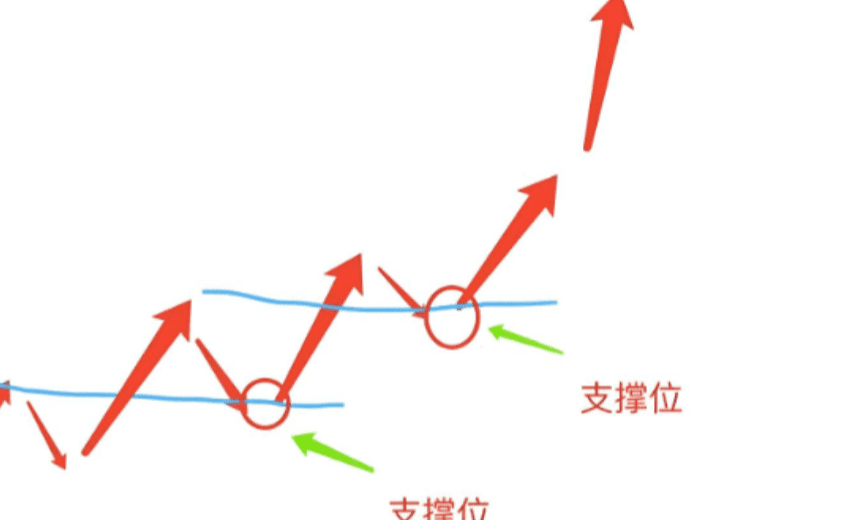
The above image also showcases a common tactic used by some market makers: penetrate, withdraw, pressure, and pull. However, under the mechanisms of the crypto market, some market makers have reduced this play, using it only once or twice before the price reaches a ceiling.
Remember, there are no absolute support levels or absolute resistance levels. Support and resistance levels only work within a fixed trend. There are no resistance levels that cannot be broken, and no support levels that cannot be dropped. Therefore, simply drawing lines is useless; the trend is the overall framework. Without a framework, any indicator lacks judgment.
So how do we determine the trend? You can refer to the basic logic introduced in previous articles. If you understand it, you won't ask this question again. Some might say: I can just buy a robot and don't need to look at the trend; it directly gives buy/sell strategies.
I can tell you: all trading strategy robots or various single-composite indicators, such as Bollinger Bands, Energy Flow, and Triple Indicator Average, will still leave you confused even after you learn them. This is because all trading strategies share a commonality: they are lagging. Signals are only generated based on candlesticks after they form. What’s the use of that?
Let's talk about strategic trading robots, especially those so-called trading tools available on the market. At first glance, the buy/sell signals they provide seem brilliant. If you think that way, I would say your intelligence is remarkable; if you don't get cut, who will? I have also experimented with many strategic trading systems in the forex market, and the results were just as poor. My nickname 'Night Watchman' is actually the name of a powerful private investment system, but without human trading, it becomes a mere machine.
Just think about it: if one day artificial intelligence can do candlesticks, the financial system will have collapsed completely. All trading strategies will either cut losses or require human judgment to work. Only these two. Therefore, valuable strategy systems are used by insiders, while worthless ones are used to cut losses.
Eight: Basic indicators for market making in the crypto space.
What should a normal market display?
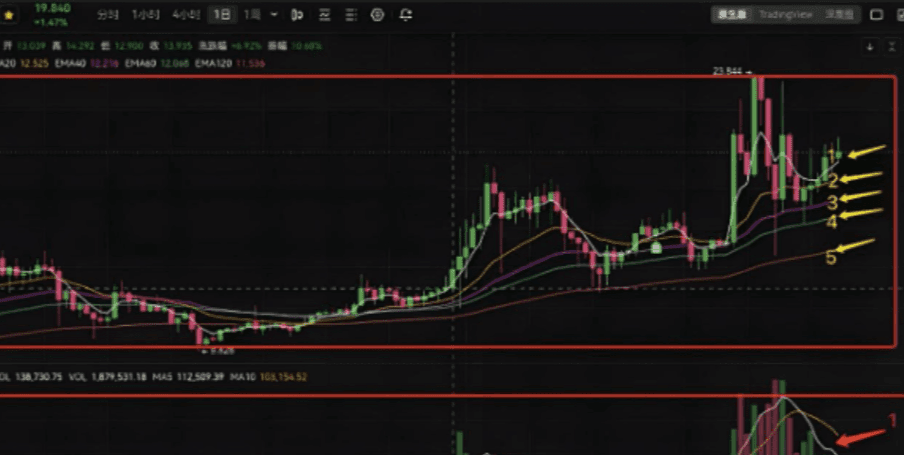
In general, the entire market is divided into main and secondary parts, but you can also display only the main chart based on personal preference. Let’s first look at the main chart: what indicators are typically used in the main chart? Personally, I habitually use the Exponential Moving Average (EMA), although some also use the Simple Moving Average (MA). What’s the difference between MA and EMA? MA can be simply explained as averaging the stock prices over several days and connecting them into a line. For instance, the 5-day average: it averages the prices from day one to day five, then from day two to day six, and so on, forming the 5-day moving average line.
How to understand? If the current price is above the 5-day moving average, it means the market buying power has increased relatively over these five days; conversely, if it is below, it indicates that the market buying power has been continuously declining within these five days. Five days is too short; what if we use a 120-day moving average? If the market price stands above the 120-day moving average, it indicates that the buying power has been continuously rising over the past 120 days. What signal does this send? Short-term buying may be volatile, but long-term buying will form a trend, so the 120-day moving average plays a role in judging the medium to long-term trend.
If the price successfully crosses above and stabilizes above the 120-day moving average, it indicates that there will be a short-term or long-term upward trend. This is the significance of moving averages. What about EMA? It’s an algorithm based on MA, and the calculation is relatively complex. Its characteristic is that it increases the sensitivity of MA, allowing moving averages to adjust when there are drastic changes in short-term candlesticks. In the image, 12345 represents EMA5, 20, 40, 60, and 120-day lines. I personally prefer EMA because it is smoother and more visually pleasing, which increases the accuracy of judgment. The difference is not substantial; for short-term trading, I suggest the latter. The relationship between moving averages and prices: the price is like a dog running freely, while the moving average is like a leash. When the dog runs too far, tension builds between the leash and the dog. However, the moving average only cares about the price and does not consider the combination of volume, so market makers use moving averages to create various traps for enticing buying and selling.
Remember: discussing price without considering volume is meaningless. Look at the perfect arrangement of these moving averages:

The situation where the moving average provides support.

The situation where the moving average exerts a suppressive effect. Feel it carefully. How do we use moving averages to help us make better judgments? Some indicators that extend from moving averages, such as: golden cross, death cross, price support, price pressure, golden spider, death spider, what do they mean? Golden cross: a crossover formed when a short-term moving average crosses above a long-term moving average, which supports the price in the short term. As shown:
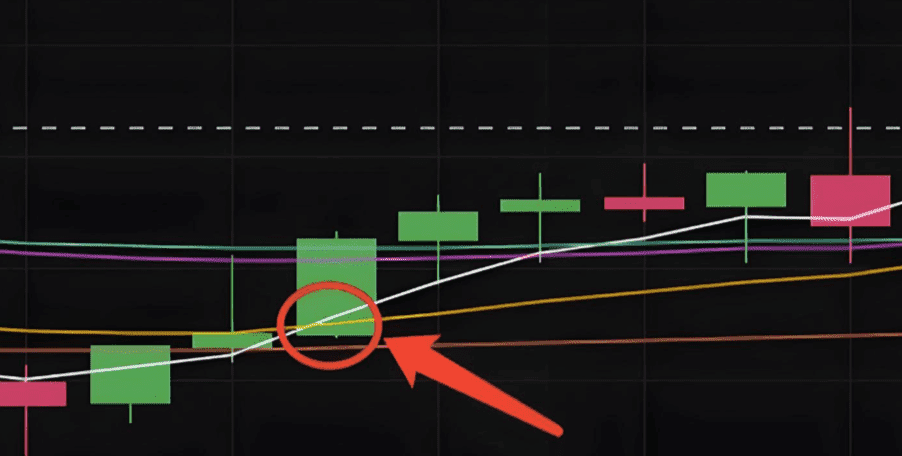
The image shows two golden crosses: one formed by the 5-day moving average crossing above the 10-day moving average, and another by the 5-day crossing above the 20-day, successfully causing the price to rise in the short term. The 5-day golden cross indicates that buyers within five days are willing to chase the price above the average price over ten days, hence short-term demand exceeds supply, leading to a natural price rise.
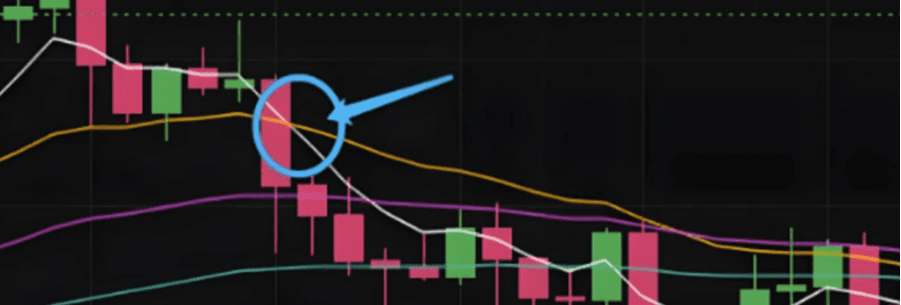
In the image, the intersection formed by the 5-day moving average crossing below the 10-day moving average is called a death cross, which exerts pressure on the price in the short term. Golden crosses and death crosses serve as indicators of upcoming trends to some extent. However, they also have a lagging effect, especially if using short-term moving averages, which have limitations. How do we enhance their power? By having multiple crossovers occur simultaneously: golden spider and death spider.
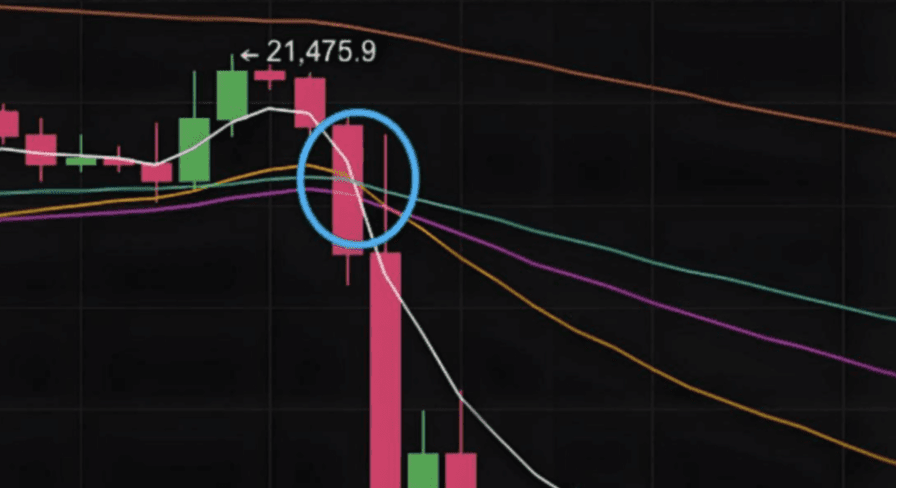
The image shows a typical death spider: the 5-day moving average crosses below the 10-day and 20-day moving averages, while the 10-day crosses below the 20-day, forming a shape resembling a spider with six legs. It provides a strong bearish warning.

Conversely, when the 5-day moving average crosses above the 10-day, the 5-day crosses above the 20-day, and the 10-day crosses above the 20-day, the shape formed is called a golden spider. The appearance of the golden spider indicates a bullish trend. The spider often predicts the trend for the upcoming period, as it involves three cycles simultaneously. The duration of the trend depends on the cycles of the moving averages involved. Similarly, as long as there are moving average crossovers, they have a lagging effect. How can we increase their stability and durability? Further extend: price support and price pressure. Price support: formed by the 5-day moving average crossing above the 10-day, the 10-day crossing above the 20-day, and the 5-day crossing above the 20-day, creating a triangular area that provides support for the price in the future.
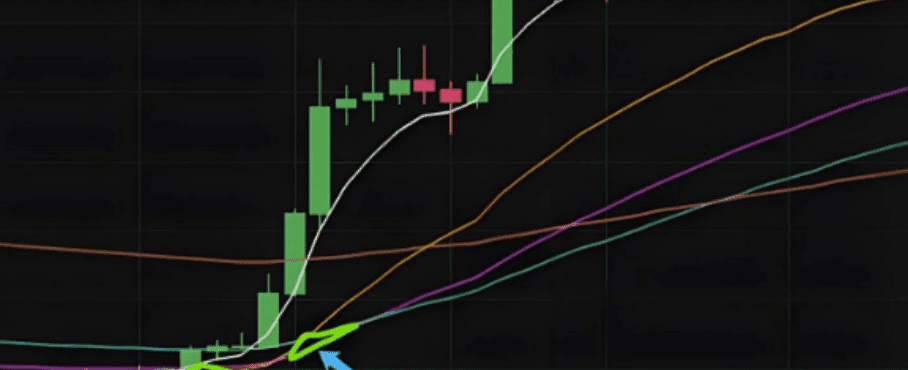
Not only did it form price support, but it also formed dual price support, which proved to lead to a sustained three-month bullish trend.

Price pressure: formed by the intersection of the 5-day moving average crossing below the 10-day moving average, the 5-day crossing below the 20-day, and the 10-day crossing below the 20-day. This triangular region exerts pressure on the price for a while.

This is also a dual price pressure formation. Under this price pressure, the price fell for a whole year.

Generally, the beginning of a trend often shows the formation of price support or pressure. Two price support or pressure formations are more stable. When such formations appear, bulls can enter at lower prices, and vice versa. Note: except in sideways or volatile markets.

The above are my more than ten years of practical experience and technical summary in trading cryptocurrencies. They may not be suitable for everyone and require individuals to combine their own practice for implementation and reflection. As a trader, the most terrifying thing is not having technical issues but lacking sufficient understanding and falling into these trading traps without realizing it! There is no invincible trading system, only invincible traders who use trading systems! This is the truth; ultimately, trading systems must return to the individual!
I am Old Seven, having experienced multiple bull and bear markets with rich market experiences in various financial fields. Here, I penetrate the fog of information to discover the real market. More opportunities to grasp the wealth code and discover genuinely valuable chances; don’t miss out and regret!